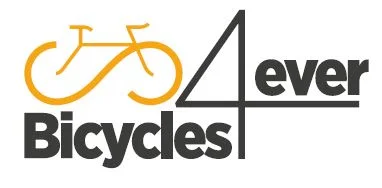Bicycle Industry FIGHTS Back at The UCI with New Handlebars!! with GC Performance
Source: GC Performance Youtube Channel: Bicycle Industry FIGHTS Back at The UCI with New Handlebars!!
Video Bicycle Industry FIGHTS Back at The UCI with New Handlebars!! with GC Performance
Video Bicycle Industry FIGHTS Back at The UCI with New Handlebars!! with GC Performance YouTube Channel.
Bicycle Industry FIGHTS Back at The UCI with New Handlebars!!
UCI Rule: Understanding the Ban on Inward-Turned Shift Levers
When it comes to competitive cycling, the rules and regulations set by the Union Cycliste Internationale (UCI) are highly influential. Recently, the UCI implemented a rule banning the inward-turn of shift levers on handlebars, causing quite a stir within the cycling community. In this article, we will delve into the reasons behind this ban, the impact it has on cyclists, and the emergence of innovative handlebar designs that comply with UCI regulations while offering performance advantages.
Understanding the UCI Rule on Inward-Turned Shift Levers
The UCI’s decision to prohibit the inward-turn of shift levers stems from concerns related to safety and fair competition. By disallowing this particular handlebar setup, the UCI aims to prevent riders from using what is colloquially known as the “puppy dog position.” This position involves cyclists resting their forearms on the tops of the handlebars and placing their hands or pinkies near the inward-turned shift levers. The UCI deems this position as compromising riders’ control and safety, particularly when racing in close proximity to others.
Impact on Cyclists: From Professionals to Enthusiasts
The UCI’s ruling has reverberated throughout the cycling community, affecting a diverse range of riders, from professional racers to recreational and club cyclists. While the ban directly affects UCI-sanctioned races, its influence extends beyond the realm of competitive cycling. Many non-professional cyclists have adopted the inward-turn of shift levers for its perceived ergonomic benefits and aerodynamic advantages. This means that both current and prospective riders seeking this setup for their bicycles are now faced with the challenge of compliance with UCI regulations.
Ergonomics: The Appeal of Inward-Turned Shift Levers
Despite the UCI’s safety concerns, proponents of the inward-turn shift lever argue that this setup offers a more natural and comfortable ergonomic position for riders, particularly during long rides. The tilt of the shifters is said to align more with the natural posture and biomechanics of the human body, providing a more relaxed and efficient riding experience, especially for extended periods in the saddle. Additionally, such a positioning is believed to offer aerodynamic advantages, contributing to improved performance.
Innovative Solutions: Handlebars Compliant with UCI Rules
In response to the UCI ban on inward-turn shift levers, cycling industry manufacturers and designers have been proactive in developing innovative handlebar designs that not only comply with UCI regulations but also offer enhanced performance benefits. These new handlebars feature a natural flare and ergonomic design that allows for the inward positioning of shift levers while adhering to UCI guidelines. One notable example is the 3D printed steel handlebar with varying widths, catering to different riding styles and preferences while ensuring UCI compliance.
Performance Edge: The Shift to Narrower Handlebars
The drive for improved aerodynamics and performance in cycling has fueled the shift towards narrower handlebars. Top-tier bicycle brands, such as BMC and Trek, are pioneering the use of narrower handlebars on their high-end models, emphasizing the benefits of reduced frontal area and enhanced speed. In wind tunnel testing, the transition from standard wider bars to narrower ones has shown measurable gains in wattage output, illustrating the potential performance advantages of these handlebar configurations.
The Future of Handlebar Designs and Cycling Performance
The ongoing evolution of handlebar design and its impact on cycling performance signals a shift in the standards for high-end bicycles. With the emergence of handlebars that accommodate inward-turn shift levers within UCI regulations, it is likely that major cycling brands will adopt these designs as part of their flagship models. As narrower handlebars become the new norm for performance-oriented cyclists, the landscape of competitive cycling and enthusiast riding alike is poised for a significant transformation.
Embracing Innovation for Performance and Compliance
The dynamics of cycling are continually evolving, encompassing both regulatory changes and advancements in equipment design. As the cycling community navigates the implications of the UCI rule on inward-turn shift levers, it is essential to embrace innovative solutions that merge performance advantages with regulatory compliance. Whether in the competitive arena or the realm of recreational cycling, the quest for optimal performance and rider comfort remains central, driving the pursuit of cutting-edge handlebar designs and configurations.
The opinions expressed in this space are the sole responsibility of the YouTube Channel GC Performance and do not necessarily represent the views of CicloNews.

